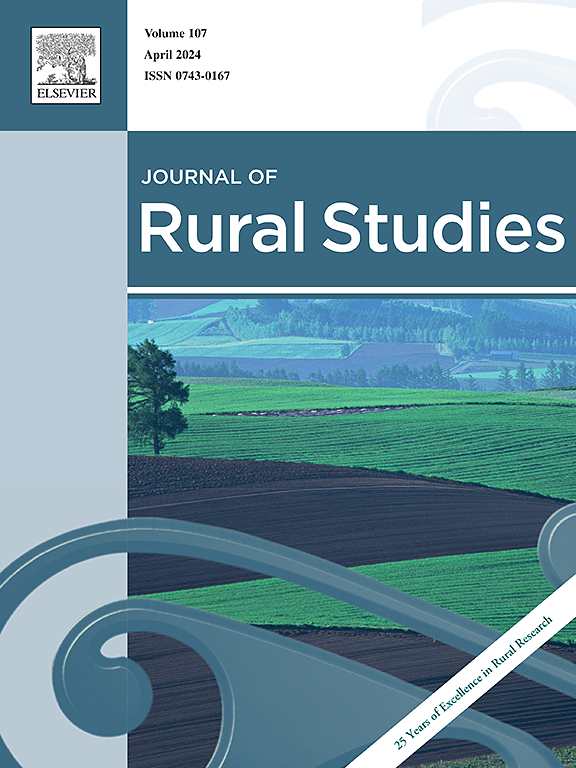生活在农村数字脆弱性的阴影下:驾驭技术需求和资源
IF 5.7
1区 社会学
Q1 GEOGRAPHY
引用次数: 0
摘要
随着互联网接入日益成为社会全面参与的必要条件,对农村公民等部分人群而言,数字排斥的风险加剧。这项定性描述性研究的目的是探索加拿大西部省份农村居民在不同宽带速度下的数字体验。参与者是在一项在线调查的后续工作中招募的,该调查要求参与者有兴趣参与焦点小组,以进一步讨论数字技术的经验。连接速度高于或低于加拿大高速定义的农村成年人(n = 32)参加了六个焦点小组中的一个。对焦点小组记录的文本进行主题分析。描述参与者数字体验的总体主题是生活在农村数字脆弱性的阴影下,或者他们的需求与可用资源之间的相互作用,三个子主题进一步详细介绍了他们的体验。农村条件威胁到数字脆弱性,当参与者的需求与可用资源不一致时,就会造成伤害。让他们更容易受到伤害的是数字化的压力,参与者称这些压力来自服务、工作、家人和朋友,以及科技公司和新兴技术。参与者通过调整技术以适应他们的生活,并通过调整他们的生活以适应其基础设施限制内的技术,来应对受到威胁的脆弱性。总体而言,农村居民的数字体验突出了环境和个体机构在风险倾向中的作用,促进了对脆弱性的细致理解。本文章由计算机程序翻译,如有差异,请以英文原文为准。

Living in the shadow of rural digital vulnerability: Navigating technology needs and resources
As internet access becomes increasingly required for full societal participation, the risks of digital exclusion are accentuated for some populations, such as rural citizens. The objective of this qualitative descriptive study was to explore the digital experiences of rural residents in a Western Canadian province with differing broadband speeds. Participants were recruited in follow-up to an online survey which asked for interest in participation in focus groups to further discuss experiences with digital technologies. Rural adults (n = 32) with connectivity speeds both above and below the Canadian definition of high-speed participated in one of six focus groups. Transcripts from the recorded focus groups were thematically analyzed. The overarching theme that described participants' digital experiences was living in the shadow of rural digital vulnerability, or the interaction between their needs and available resources, with three sub-themes further detailing their experiences. Rural conditions threatened digital vulnerability, and produced harm when there was mis-alignment between participants’ needs and available resources. Compounding their susceptibility to vulnerability, were pressures to engage digitally, which participants described coming from services, work, and family and friends, and tech companies and emerging technology. Participants navigated threatened vulnerability by accommodating the technology to fit their lives and by adapting their lives to fit the technology within their infrastructure limitations. Overall, the digital experiences of rural residents highlight the role of context and individual agency in predisposition to risk, advancing a nuanced understanding of vulnerability.
求助全文
通过发布文献求助,成功后即可免费获取论文全文。
去求助
来源期刊

Journal of Rural Studies
Multiple-
CiteScore
9.80
自引率
9.80%
发文量
286
期刊介绍:
The Journal of Rural Studies publishes research articles relating to such rural issues as society, demography, housing, employment, transport, services, land-use, recreation, agriculture and conservation. The focus is on those areas encompassing extensive land-use, with small-scale and diffuse settlement patterns and communities linked into the surrounding landscape and milieux. Particular emphasis will be given to aspects of planning policy and management. The journal is international and interdisciplinary in scope and content.
 求助内容:
求助内容: 应助结果提醒方式:
应助结果提醒方式:


